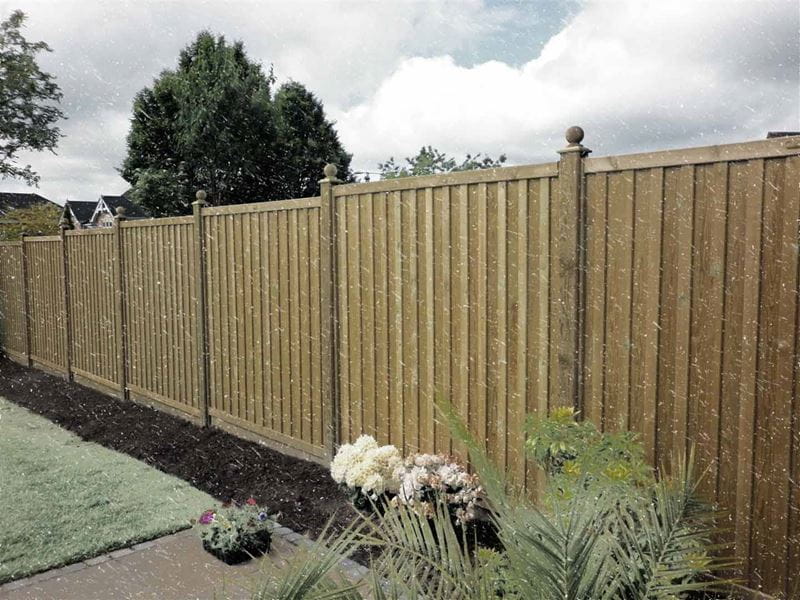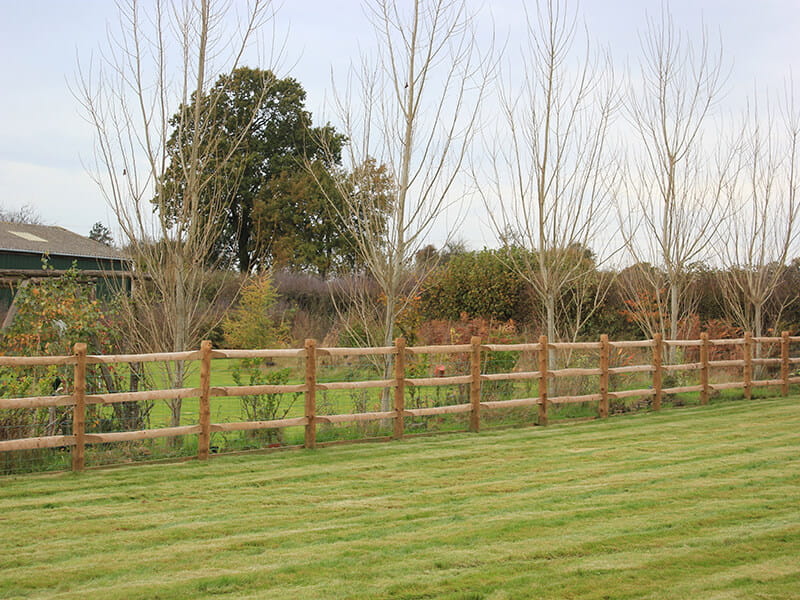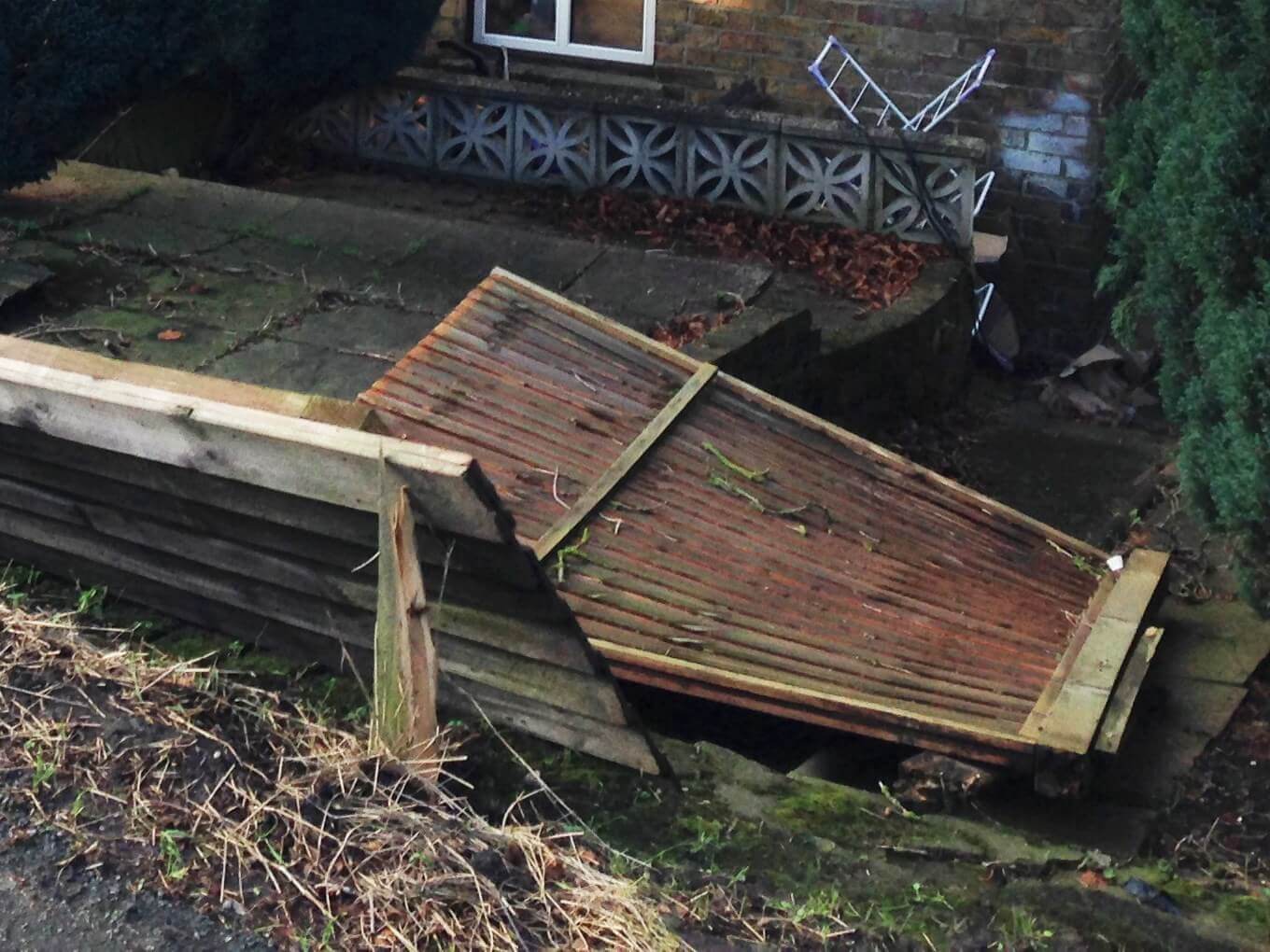08/01/2025 01:54 PM
As the chill of winter sets in, your fence needs proper care to endure the harsh weather. Frost, heavy winds, and excess moisture can challenge even the sturdiest fences, so preparing them in advance is key to maintaining their structural integrity and aesthetic appeal. Follow these tips to protect your fence and garden this winter.

Below are our top 5 tips for being prepared and ensuring your fence endures the winter season. Click below to go directly to the tip you want to read about.
1. Visual inspection
2. Clear away debris
3. Removing hazards
4. Treated timber
5. Structural checks
1. Perform A Visual Check
Inspect and Address Damage Early
It is well worth wandering along the existing fence line to check for any visible signs of damage, rot or decay. If your fence is looking worse for wear, consider whether or not to replace the current installation so that it will stand up to prolonged poor weather conditions or a storm.
Even premium fences require routine inspections to ensure they remain in top condition. For timber fences, you should also pay attention to sections susceptible to rot; signs of warping, cracks, or weakened joints should be investigated further. Metal fences should be examined for scratches or damage that has caused exposed areas where rust could develop. Addressing any minor damage promptly prevents worsening under potential winter extreme weather.
Pro Tip: Keep an eye on fence posts as well. Loose or leaning posts can compromise the entire structure, especially under the pressure of strong winter winds.

2. Clear Away Debris
Winter preparation begins with a clean fence. Dirt, moss, and mildew can trap moisture, leading to discolouration or damage over time. Move leaves and debris away from the fence line, to stop any chance of leaves or debris sitting above the gravel board. This is one of the many reasons we recommend using a gravel board that uses a different species of timber and is treated differently and its primary purpose is to raise the fencing away from the ground to avoid contact with grass, mud, and leaves.
If your fence is looking worse for wear, consider whether or not to replace the current installation so that it will stand up to prolonged poor weather conditions or a storm.
3. Remove Weak or Low Hanging Branches
Prune and Protect the Surrounding Landscape
In strong wind or heavy snow, branches could fall and damage your fence. Even the strongest fences can be damaged by overhanging branches or dense vegetation. Trim back any trees or plants near your fence to reduce the risk of falling branches during storms. This also improves air circulation, helping prevent unsightly green areas from building up on the fence surface. For metal fences, it prevents scratches or abrasions that could expose the material to potential rusting. 
4.Timber Treatment
Choosing Treated Fencing with a Guarantee
Here at Jacksons, we make our posts, gravel boards and any product that will be in contact with soil, from a different type of timber to our panels and our other products like gates or rails with little or no contact with the ground. Our bespoke treatment process strengthens the timber, making it almost impervious to rot or wood boring pests. This is why we feel confident about offering our industry leading 25-year guarantee. Other brands and manufacturers of 'premium' fencing often need to reapply protective coatings annually to protect their timber's grain and natural colour.
5. Check Fence Posts
One of the most common causes of fences not staying where you want them to be - which is hopefully upright - is because the posts are of inferior quality. If you see a fence at a funny angle, look down where the posts meet the ground; quite often, you will see the fence is leaning in a precarious manner because the posts have rotted at ground level. If you think about it, a fence panel is a bit like a sail, a large flat surface that will, by its very nature, catch a hefty dose of wind – the wind loading on the panel will put a fair amount of strain on the posts at the fixed point they go into the ground. Any weakening in the post due to continued soaking in the ground, bad quality timber and lack of treatment, and the post will eventually snap.
While premium materials are designed to be durable, reinforcing your fence against strong winds is a wise precaution. Check that all panels, posts, and hardware are secure. Tighten any loose brackets or screws, mainly if your fence relies on stainless steel fittings, which are resistant to rust but must remain firmly in place.
If your property is in an area prone to high winds, wind-resistant designs, such as slatted or hit and miss fencing that allow more airflow, can reduce strain on the structure.
Read our blogs for more information on wind resistant fencing:
A Fence Exposed to Strong Winds
Wind Resistant Fencing Protects Rural Family Garden

Why Premium Fencing Materials Excel in Winter
Investing in premium fencing materials not only elevates the look of your property but also ensures long-term durability. Here's why they're worth it:
- Pressure Treated Timber: Naturally resistant to decay and backed by guarantees of up to 25 years, pressure-treated wood is built to withstand winter's harshest conditions.
- Galvanised Steel: These materials are lightweight yet strong, with advanced finishes that prevent corrosion and require minimal maintenance.
- High-End Coatings and Finishes: Premium fences often feature UV-resistant stains and powder coatings, ensuring they retain their appearance and strength through every season.
Stay Ahead of Winter with Expert Help
Preparing your fence for winter is a small investment of time that pays off down the line by identifying any issues early on. If you're considering upgrading to premium fencing materials or need professional assistance with winter preparations, check out our premium fence panel range or contact one of our Approved Installers. Their expertise can ensure you receive a professional installation using the very best materials.
Learn About Our Approved Installers
Invest in high quality fencing and enjoy the peace of mind that comes with knowing it's ready for whatever winter brings.
Related Content
Compare Semi Solid Fence Panels
Find out how rain can affect your wooden fence and how to protect it.
How Does Rain Affect A Wooden Fence?
Discover why fence panels rattle and how to fix them for a quieter, more secure garden.

